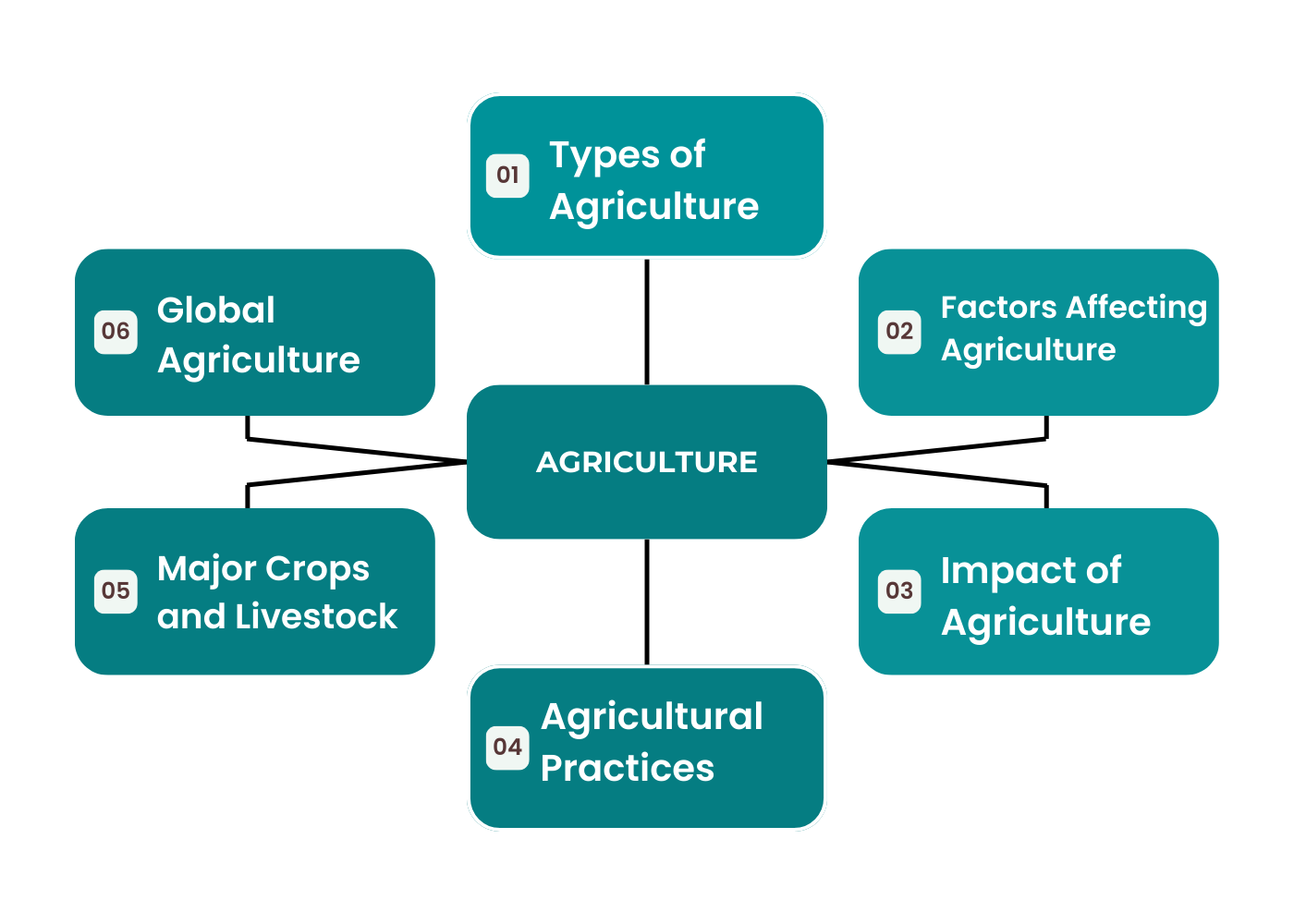Detailed content
Introduction to Agriculture
Agriculture, often referred to as the backbone of human civilization, encompasses the cultivation of crops, the raising of livestock, and other activities aimed at producing food, fiber, and other essential resources for human consumption and industrial use. It is a multidimensional field influenced by geographical factors such as climate, soil, topography, and water availability, as well as human factors like culture, technology, and economic systems.
Historical Development
The origins of agriculture can be traced back to the Neolithic Revolution, around 10,000 BCE, when humans transitioned from a nomadic, hunter-gatherer lifestyle to settled farming communities. This shift led to the domestication of plants and animals, the development of agricultural techniques, and the emergence of permanent settlements. Over millennia, agriculture evolved through various stages, including the invention of tools, the adoption of irrigation systems, the spread of crop rotation, and the use of machinery during the Industrial Revolution.
Geographical Distributione
Agriculture exhibits a diverse geographical distribution influenced by factors such as climate, soil fertility, land availability, and cultural practices. Broadly, agricultural regions can be classified into temperate, tropical, arid, and high-altitude zones, each characterized by specific crops and farming systems. For instance, the temperate regions of North America and Europe are known for wheat, corn, and dairy farming, while the tropics produce crops like rice, sugarcane, and tropical fruits. Arid regions rely on irrigation and drought-resistant crops, while high-altitude areas practice pastoralism and grow hardy crops like barley and potatoes.
Environmental Impacts
Agriculture exerts significant environmental impacts, affecting ecosystems, biodiversity, water resources, and climate patterns. Intensive farming practices, such as monoculture and excessive use of fertilizers and pesticides, can lead to soil erosion, water pollution, and loss of biodiversity. Deforestation for agricultural expansion contributes to habitat destruction and carbon emissions. Furthermore, livestock farming is a major source of methane, a potent greenhouse gas, contributing to climate change. Sustainable agriculture initiatives aim to mitigate these impacts through practices like organic farming, agroforestry, and conservation agriculture.
Technological Advancements
Advancements in technology have revolutionized agriculture, increasing productivity, efficiency, and sustainability. Mechanization, powered by tractors and machinery, has reduced labor requirements and increased farm output. Biotechnology has led to the development of genetically modified crops with improved yields, pest resistance, and drought tolerance. Precision agriculture utilizes satellite imagery, GPS, and sensor technology to optimize resource use, minimize waste, and enhance decision-making on the farm. Additionally, digital platforms and e-commerce facilitate market access, information sharing, and agricultural extension services for farmers.
Socio-economic Significance
Agriculture plays a crucial role in the global economy, providing livelihoods for billions of people and serving as a source of food security, income, and rural development. Smallholder farmers, who cultivate small plots of land, constitute the majority of agricultural producers in developing countries, where agriculture remains a primary driver of poverty reduction and economic growth. Agribusinesses, including food processing, distribution, and retailing, form a complex supply chain connecting farmers to consumers worldwide. Furthermore, agriculture contributes to cultural identity, shaping traditions, cuisines, and rural landscapes.
Challenges and Opportunities
Despite its importance, agriculture faces numerous challenges in the 21st century, including population growth, urbanization, climate change, resource depletion, and food insecurity. Addressing these challenges requires innovative solutions, such as sustainable intensification, climate-smart agriculture, and inclusive value chains. Investments in agricultural research, infrastructure, and education are essential to enhance productivity, resilience, and food system sustainability. Moreover, fostering partnerships between governments, civil society, academia, and the private sector is crucial for promoting inclusive and equitable agricultural development.
Conclusion
In conclusion, agriculture is a complex and dynamic field shaped by geographical factors, historical trends, technological innovations, and socio-economic dynamics. Understanding its multifaceted nature is essential for addressing global challenges like food security, environmental sustainability, and rural development. By adopting holistic approaches that integrate science, policy, and community engagement, we can build resilient and equitable food systems that nourish both people and the planet.
